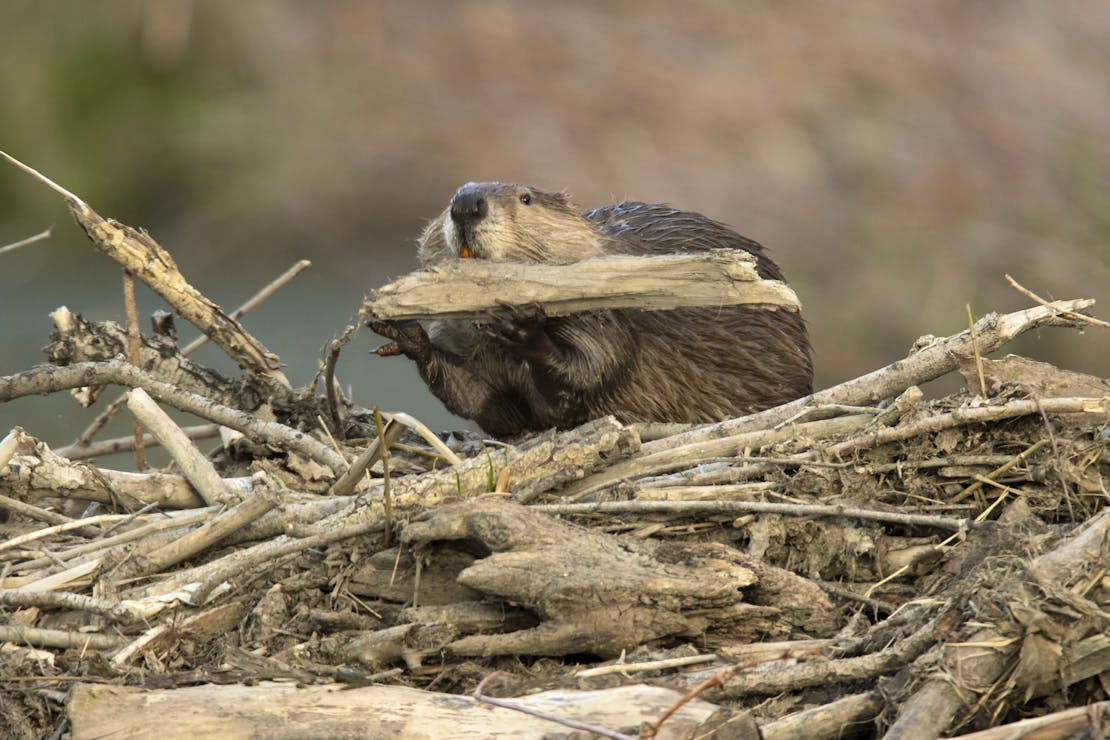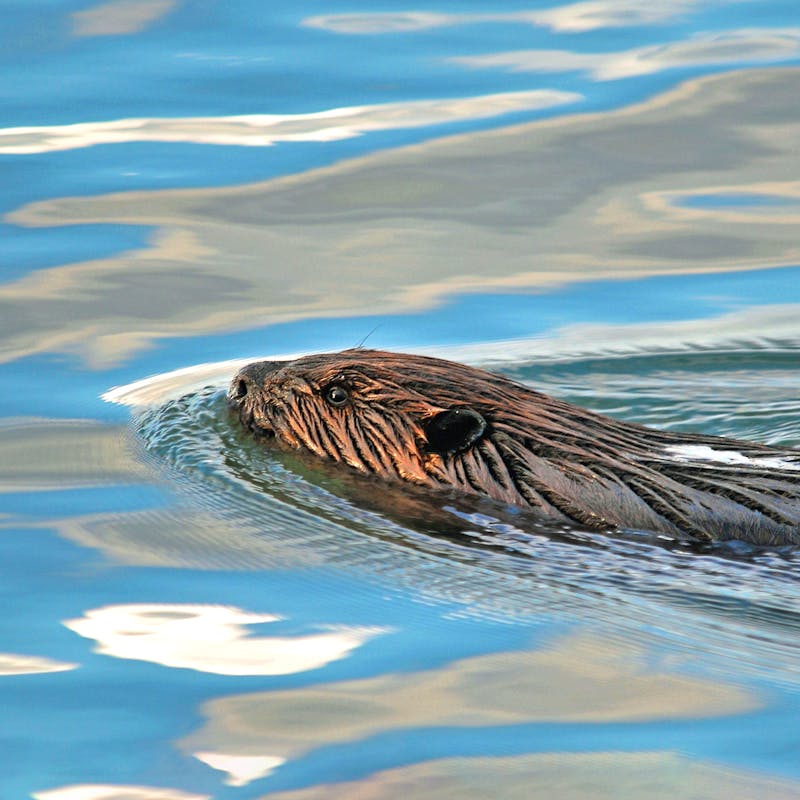Did you know that beavers are the largest rodent in North America and the second largest in the world (after the capybara)? Did you also know that beavers are the state animal of New York and Oregon and the national animal of Canada? How about that they primarily eat wood—although they’ll also eat leaves and aquatic plants? Or that they have orange teeth thanks to iron in their tooth enamel? Did you also know that April 7th is International Beaver Day? A day to raise awareness about these rodents of unusual size and their ecological importance.
Nearly hunted to extinction for their thick, waterproof fur, beavers rebounded thanks to laws introduced for their protection. As they grew in number, wetland ecosystems benefited from their presence.
Beavers are considered a “keystone species” because they play an essential role in maintaining the health of ecosystems. Known as “ecosystem engineers,” they increase local biodiversity by creating new habitats or modifying existing ones when they create ponds for freshwater fish, migratory birds, amphibians, turtles and other wetland species.
One of the biggest threats facing beavers is habitat loss. Beavers rely on wetlands and riverbank habitats to survive, but these habitats are increasingly being developed, altered or destroyed by human activities. Defenders of Wildlife is trying to protect these habitats through land acquisition and facilitating conservation easements (legal agreements by landowners to protect land for conservation purposes).
Another challenge facing beavers is climate change, given the rising temperatures and changing rainfall patterns that affect the availability of essential water resources. But beavers can buffer some of the effects of climate change on rivers by storing water and slowly releasing it downstream. The wetland habitats they create can also help slow the spread of wildfires. Defenders is working to address this threat to beavers posed by our changing climate by promoting the use of water-efficient practices and promoting climate-smart land management.
Sometimes beavers’ activities bring them into conflict with humans – for example, gnawing trees and blocking road drainage culverts, which can cause flooding. We can reduce conflicts by fencing trees and culverts or building beaver-proof culvert grates and fences or “beaver deceivers.” If these tools can’t solve the problem, beavers can often be relocated to areas where they won’t clash with humans and where their ecosystem engineering skills are needed.
Defenders started a cost-share program to help pay for the expense associated with beaver coexistence with traditional farmers of Spanish, Mexican and Native American heritage in northern New Mexico. Our work has prevented the flooding of homes and roads while allowing beavers to remain and improve wildlife habitats. In one case, protecting beavers was key to the appearance and documentation of a new firefly species!
If you have problems with beavers download our brochure for wildlife-friendly solutions, or if you are in Colorado, New Mexico or Wyoming join The Beaver Coexistence Incentive Program.
Participating in the beaver coexistence incentive program is simple:
- Plan your project. Contact Defenders for help with plans and for technical advice on design and materials specific to your project.
- Once your project is complete, submit the reimbursement form and required supporting documentation (receipts, pictures).
Defenders has also started to develop a beaver conservation partnership with biologists from the Tulalip Tribe in the Northwest. Their long-standing beaver relocation project moves “nuisance” beavers to river systems in the Snohomish Watershed, which would benefit from the presence of beavers. In addition, our partnership with the Methow Beaver Project promotes coexistence with beavers by helping to fence trees and culverts, as well as offering beaver coexistence training, workshops and outreach materials.
If you want to help support beaver conservation, consider making a donation to Defenders of Wildlife or getting involved in our programs and initiatives. Together, we can work to protect these amazing creatures and their habitats.











Follow Defenders of Wildlife
facebook bluesky twitter instagram youtube tiktok threads linkedin